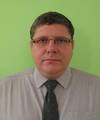

In 2008, the first George de Hevesy lectures took place in both Hungary and Germany. The lecture was established in 2007 by the Magyar Kémikusok Egyesülete (Association of Hungarian Chemists) and the German Chemical Society and has been taking place in both countries ever since.
The lecture's namesake , George de Hevesy, was a Hungarian chemist who also researched and taught in Germany. De Hevesy was awarded the Nobel Prize in Chemistry in 1943 for the development of the radioactive indicator method. He discovered hafnium and is considered the father of nuclear medicine, which still makes him an important scientist today.

Dr. Gyula Tircsó conducts research in the field of contrast agents. His research focuses both on improving the physico-chemical properties of such contrast agents and, more recently, increasingly on replacing toxic Gd complexes with contrast agents based mainly on manganese(II) complexes, which are less dangerous for the living organism but have the same (or even better) parameters.
| 2018 | Zoltán Kónya, Szeged/Hungary |
| 2012 | Gerald Brezesinski, Potsdam |
| 2011 | Karsten Krohn, Paderborn |
| 2010 | Pal Ormos, Szeged/Hungary |
| 2008 |
Ferenc Fülöp, Szeged/Hungary Lutz F. Tietze, Goettingen |
Prof. Dr. Barbara Kirchner, Rh. Fr.-Wilhelms-Universität Bonn (lead)
Prof. Dr. Tobias Beck, University of Hamburg
Prof. Angela Casini, Technical University of Munich
Prof. Dr. Bernd Goldfuß, University of Cologne
This page has been machine translated. If you have any feedback or comments please feel free to contact us. 
last modified: 08.07.2024 15:29 H from N/A